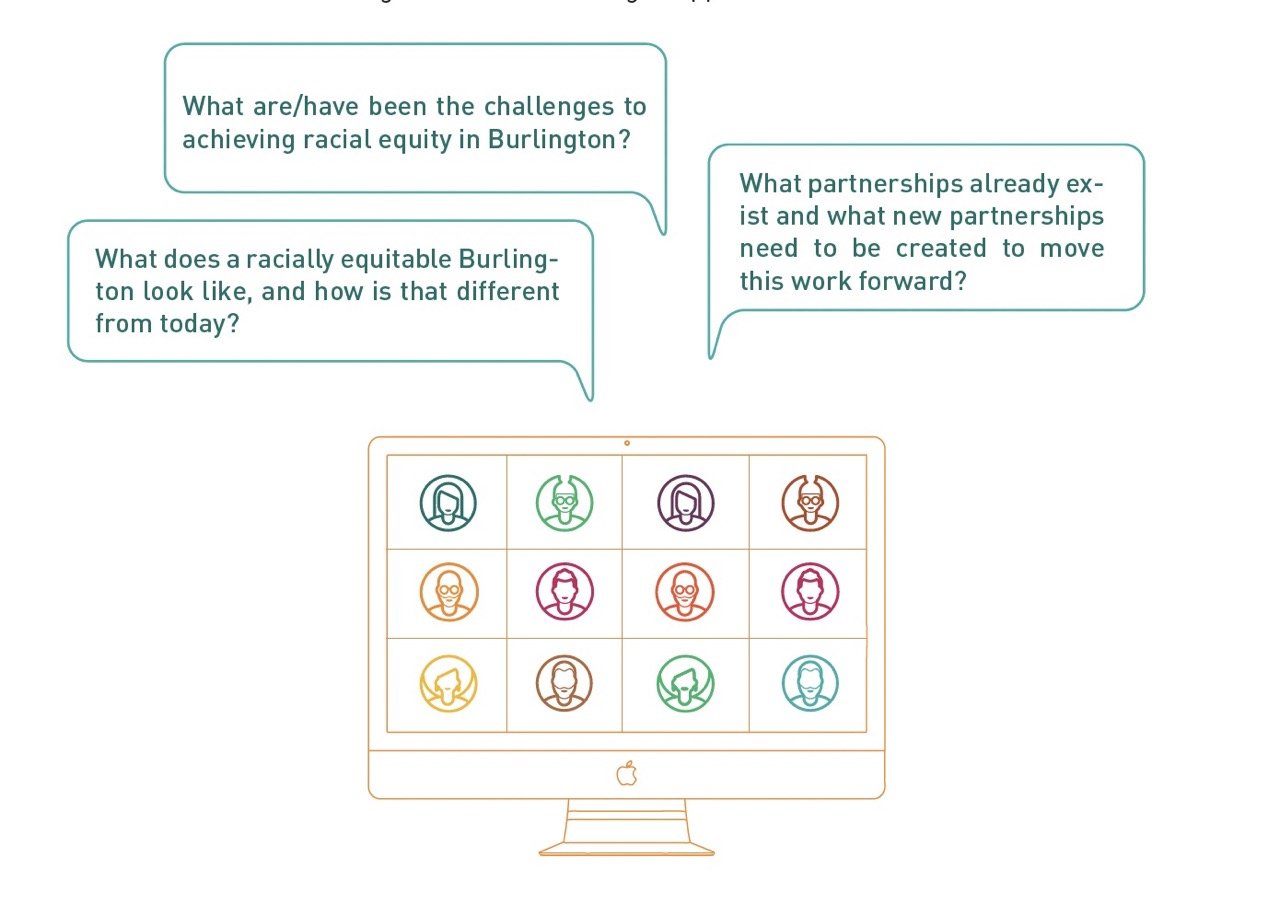Burlington Racial Equity Roadmap
Location: Burlington, VT
Status: 2021-ongoing
Client: Burlington Department of Public Works (DPW)
Collaborators: VHB, Agency LP
Impact Areas: Spaces and Places of Belonging, Nontraditional Collaborations
As a part of Burlington’s Great Streets Initiative, the Department of Public Works (DPW) began a detailed design for Main Street. Burlington, Vermont, is a predominantly white city with a rapidly growing immigrant population, particularly among youth. A primary goal for the engagement process led by Grayscale was to ensure that the voices contributing to the design process included and expanded beyond the overwhelmingly white base of community participants.
Building on the tenets of Burlington’s Racial Equity Strategic Roadmap, also developed by Grayscale in prior years, the engagement plan for Main Street not only included traditional public meetings but also include focus groups made up of residents considered either "hardest to reach” or “most impacted”: youth, mobility-challenged residents, immigrants, BIPOC residents, and small businesses. A series of discussions and idea sessions not only addressed the issue of a 100% white participation rate for the project’s initial public meetings, but also influenced meaningful design ideas including interactive public art for young children, posts and scaffolds for banners that celebrate various cultural holidays, display signs in various languages, places to pause and sit along the street, and spaces for street vending and cultural events.
Location: Burlington, VT
Status: 2021-ongoing
Client: Burlington Department of Public Works (DPW)
Collaborators: VHB, Agency LP
Impact Areas: Spaces and Places of Belonging, Nontraditional Collaborations
As a part of Burlington’s Great Streets Initiative, the Department of Public Works (DPW) began a detailed design for Main Street. Burlington, Vermont, is a predominantly white city with a rapidly growing immigrant population, particularly among youth. A primary goal for the engagement process led by Grayscale was to ensure that the voices contributing to the design process included and expanded beyond the overwhelmingly white base of community participants.
Building on the tenets of Burlington’s Racial Equity Strategic Roadmap, also developed by Grayscale in prior years, the engagement plan for Main Street not only included traditional public meetings but also include focus groups made up of residents considered either "hardest to reach” or “most impacted”: youth, mobility-challenged residents, immigrants, BIPOC residents, and small businesses. A series of discussions and idea sessions not only addressed the issue of a 100% white participation rate for the project’s initial public meetings, but also influenced meaningful design ideas including interactive public art for young children, posts and scaffolds for banners that celebrate various cultural holidays, display signs in various languages, places to pause and sit along the street, and spaces for street vending and cultural events.
Location: Burlington, VT
Status: 2021-ongoing
Client: Burlington Department of Public Works (DPW)
Collaborators: VHB, Agency LP
Impact Areas: Spaces and Places of Belonging, Nontraditional Collaborations
As a part of Burlington’s Great Streets Initiative, the Department of Public Works (DPW) began a detailed design for Main Street. Burlington, Vermont, is a predominantly white city with a rapidly growing immigrant population, particularly among youth. A primary goal for the engagement process led by Grayscale was to ensure that the voices contributing to the design process included and expanded beyond the overwhelmingly white base of community participants.
Building on the tenets of Burlington’s Racial Equity Strategic Roadmap, also developed by Grayscale in prior years, the engagement plan for Main Street not only included traditional public meetings but also include focus groups made up of residents considered either "hardest to reach” or “most impacted”: youth, mobility-challenged residents, immigrants, BIPOC residents, and small businesses. A series of discussions and idea sessions not only addressed the issue of a 100% white participation rate for the project’s initial public meetings, but also influenced meaningful design ideas including interactive public art for young children, posts and scaffolds for banners that celebrate various cultural holidays, display signs in various languages, places to pause and sit along the street, and spaces for street vending and cultural events.







